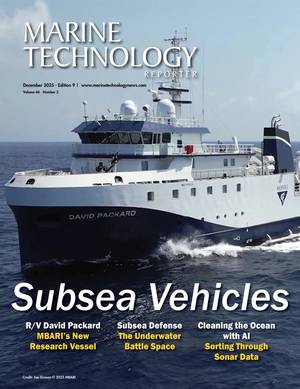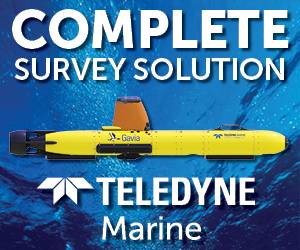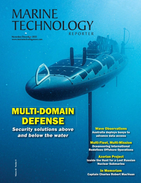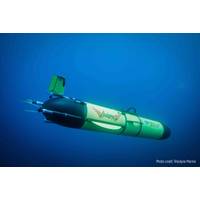
Underwater Autonomous Glider Departs to Circumnavigate the Globe
it to travel vast distances, staying deployed for longer.At 2.57m long and 0.33m in diameter, Redwing carries a payload of up to 3.5kg, including:CTD sensor (conductivity, temperature, depth/density)Altimeter to avoid the seafloorAttitude and compass sensors for navigationAnd a fish monitor from Dalhousie University, tracking tagged marine life such as sharks and whalesTeledyne Marine engineers will work closely with more than 50 Rutgers University students at the Center for Ocean Observing Leadership (COOL), who have helped program the navigation software that will guide Redwing across the oceans. Together
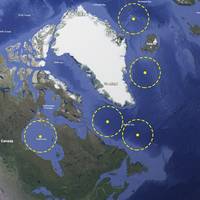
Mother Ship with USV Flotilla Could Boost Coast Guard Capabilities
Researchers from Dalhousie University and the US Naval Postgraduate School presented a concept for an affordable mother ship with a flotilla of uncrewed surface vessels (USVs) capable of providing coast guard services at the ISCRAM2025 Conference (Information Systems for Crisis Response and Management) in Halifax, Canada, last month.The concept could provide a persistent, on-water presence which could assist with search and rescue response, response to shore-based emergencies, maritime domain awareness, critical underwater infrastructure surveillance and protection, interdiction of illegal products
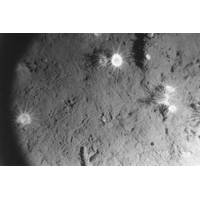
New Research Sheds Lights on the Huge Carbon Store in Canada’s Seabed
Epstein, Post-Doctoral Fellow, Department of Biology, University of VictoriaJulia K. Baum, Professor of Biology, Department of Biology, University of VictoriaThis article was co-authored by Susanna Fuller, vice-president of conservation and projects at Oceans North and senior research fellow at Dalhousie University.(Source: The Conversation
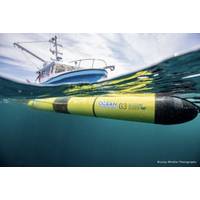
Marine Telemetry: Shedding Light Below the Waves
have sparse management.“You know, we have no idea where marine species are spending most of their time. We have no idea if marine protected areas are working. That was kind of the motivation behind it,” said Nakia Cullen, a research manager at Megafauna Foundation and PhD candidate at Dalhousie University in Halifax. Cullen lives and works in Zavora, Mozambique, an area rich with sharks and manta rays, but also data deficient and lacking the extensive management necessary. While her research started as underwater visual surveys, Cullen has been able to delve into telemetry in the past few years
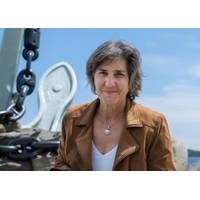
Happy to be Blue
marine research.As published in the March/April edition of Marine Technology Reporter“There’s something compelling about the color blue,” said Dr. Anya Waite, scientific director and CEO of the Ocean Frontier Institute (OFI) and associate and vice president research (ocean) at Dalhousie University. As the bright sky shone through her office window and the waters of Halifax Harbor glimmered through the tree line, blue seemed to be even more inspiring. OFI, based on Dalhousie’s campus, is an interdisciplinary research partnership between the university, Memorial University of Newfoundlan
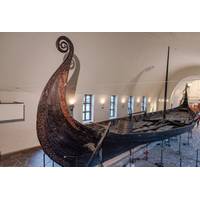
Insights from the 50th International Congress of Maritime Museums
to Indigenous VoicesAs a country trying to make reparation after centuries of indigenous genocide and land colonization, Canada has begun to focus on inclusivity and diversity in many discussions —maritime museums included. Dr. Jerry Bannister, director of the marine affairs program at Dalhousie University in Halifax, explained that museums have the power to set the infrastructure for what tourists should see and learn while visiting. When working with and on colonized land, he advised, there are three angles to keep in mind:1. Content—what histories do we discuss?2. Perspective&mdash
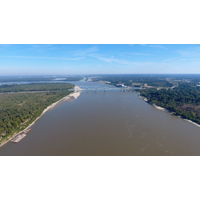
NOAA Forecasts Average Summer 'Dead Zone' in the Gulf of Mexico
NOAA has produced a dead zone forecast using a suite of models jointly developed by the agency and its partners — teams of researchers at the University of Michigan, Louisiana State University, William & Mary’s Virginia Institute of Marine Science, North Carolina State University, Dalhousie University and the U.S. Geological Survey (USGS), who provided the Mississippi River nutrient loading data for the models. NOAA integrates the results of these multiple models into an aggregate forecast and releases the forecast in coordination with these external groups, some of whom are also developing
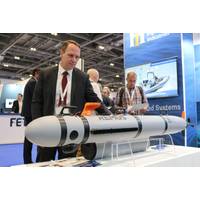
AUV Extravaganza: Tech Advances in Autonomous Underwater Vehicles
any need to communicate, he says.The company got an initial break via the Jerico program, to develop a simple AUV that meets science users’ needs. Since then its seen its AUVs deployed in all five oceans, says Teixero, mostly for ocean science or survey related operations.One project, with Dalhousie University, saw the YUCO-PHYSICO AML multi-parameter probe model used in the St. Lawrence River estuary in Canada. The vehicle had an AML 3 sonde with fluorimeter, CTD and SVP and chased and ran a corkscrew or helix style pattern with a 30m radius (Seaber says 15m is possible) through a Rhodamine tracer
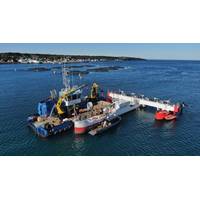
Atlantic Canada’s First Instream Tidal Energy Set for Delivery in Early 2022
record marine life interactions in the high-flow environment.Hundreds of hours and terabytes of data have been collected and analysed to date. Sustainable Marine is also collaborating with the Ocean Tracking Network - a global aquatic research, data management and partnership organization based at Dalhousie University - and have installed two acoustic receivers on the platform to detect tagged fish. Data collected will help inform understanding of the movement of aquatic species around the system.In addition to this comprehensive environmental monitoring effort, Sustainable Marine has engaged with Mi&rsquo
 December 2025
December 2025
